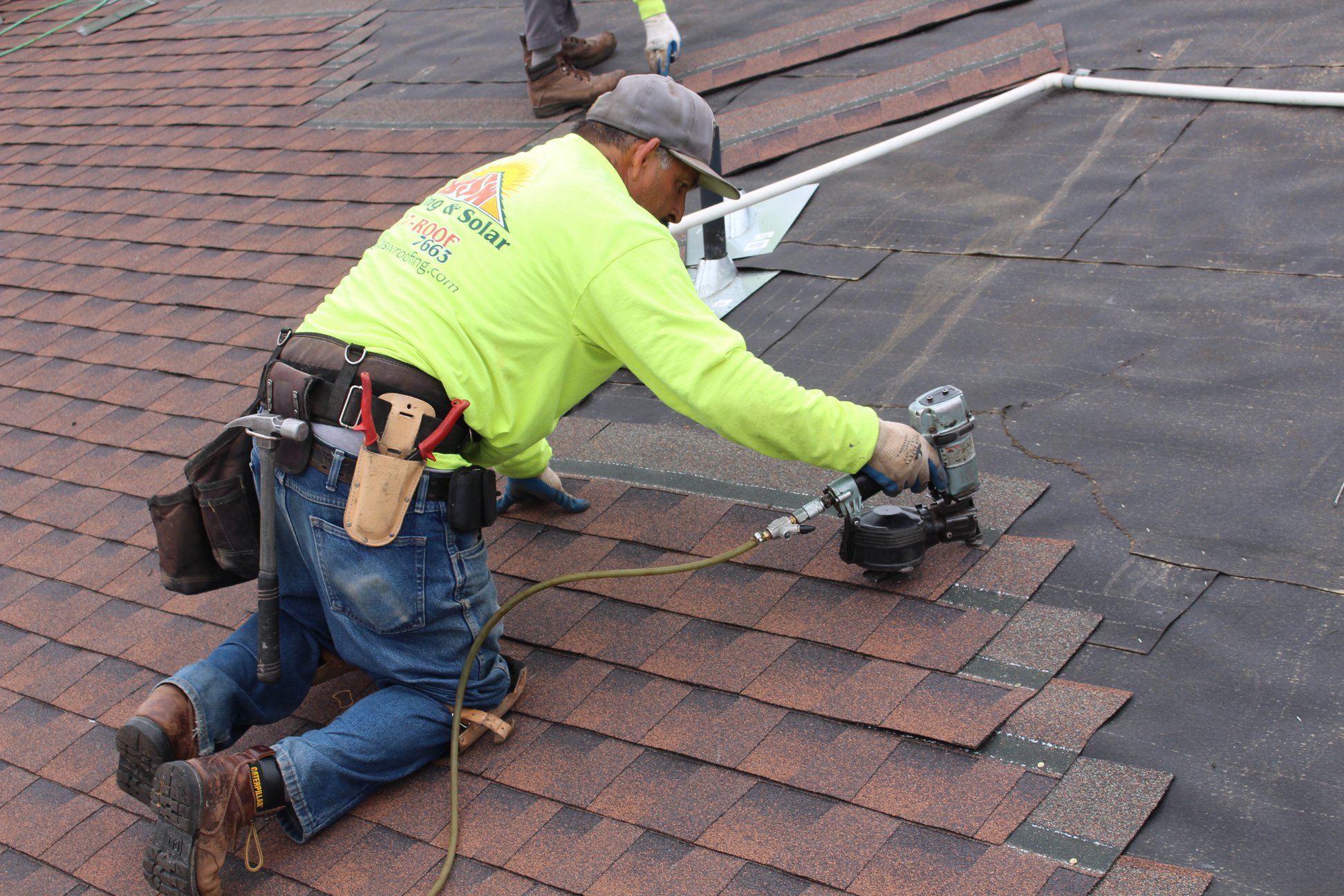Examining the Solutions Supplied by Roofing Companies in Gainesville Florida
Ideal Practices for Ensuring Proper Roof Covering Air Flow
A balanced consumption and exhaust vent ratio, frequently 1:300, plays a critical function, with consumption vents preferably positioned at the reduced edge of the roof for amazing air entrance and exhaust vents at the top for warm air departure. Maintaining insulation away from vents is crucial to protect against air movement constraint.
Understand Ventilation Fundamentals
Effectively recognizing air flow fundamentals is crucial for making certain the long life and efficiency of roof. Reliable ventilation reduces dampness buildup and temperature extremes in the attic, both of which can bring about substantial architectural damages gradually. A well-ventilated roofing assists in stopping usual problems such as mold and mildew growth, timber rot, and ice dams, which can endanger the honesty of the roof products and the underlying frameworks.
The key goal of air flow is to facilitate the activity of air, permitting a regular exchange between the outside and interior settings. This balance is achieved via a combination of intake and exhaust vents that collaborate to maintain optimal airflow. Consumption vents, typically situated along the eaves or soffits, permit fresh air to enter the attic room area, while exhaust vents, often located at or near the roofing system ridge, make it possible for warm, humid air to leave.
Secret aspects influencing the efficiency of roof covering ventilation consist of appropriate placement, appropriate sizing, and guaranteeing that both intake and exhaust vents are unhampered. Regular inspection and upkeep are vital to recognize possible blockages, damages, or inefficiencies in the ventilation system, consequently protecting the roofing's performance and durability.
Sorts Of Roof Covering Vents
Roof covering vents play an essential function in preserving effective attic room ventilation and, by expansion, the total health of the roofing system. Various kinds of roofing vents are available, each with distinct benefits tailored to certain roof demands. Ridge vents, for instance, are set up along the roof's height, permitting cozy, humid air to run away from the attic. They provide constant ventilation and mix seamlessly with the roofline, making them both reliable and visually pleasing.

Soffit vents are installed under the eaves and operate in tandem with roof covering vents to guarantee a balanced intake and exhaust system. By allowing cooler air to go into from below, soffit vents facilitate the expulsion of hot air with top vents. Gable vents, situated on the exterior wall surfaces of the attic room, deal an additional effective remedy, particularly in homes with saddleback roofs.
Analyze Your Existing Air Flow

Following, take into consideration the age and problem of your roof materials and air flow components. Older systems might not abide by existing building ordinance or may have deteriorated over time, decreasing their efficiency. Conduct a detailed exam to recognize any type of indicators of damage, such as corrosion, damage, or spaces that can compromise the system's performance.
Additionally, gauge the attic temperature level and humidity levels. High temperatures and moisture can indicate insufficient ventilation - roofing companies. Utilize a hygrometer and thermostat to acquire exact readings, comparing them with outdoor conditions. Relentless inconsistencies suggest prospective concerns that require attending to.
Setup Best Practices
Reliable installment of roofing ventilation systems is paramount for making sure optimum discover here efficiency and long life. Correct installation begins with comprehending the specific air flow requirements of the roof covering and the structure it covers. This includes determining the appropriate proportion of intake to wear down vents, generally adhering to the 1:300 regulation, which specifies one square foot of air flow for each 300 square feet of attic floor space.

Consumption vents must be installed at the roofing's lower edge, usually in the soffits, to allow trendy air to go into. Exhaust vents, on the other hand, ought to be mounted near or at the roofing's height to facilitate the leave of warm, damp air.
Seal all air vent links thoroughly to avoid air leaks and prospective water seepage. Usage top quality products and follow supplier guidelines to ensure resilience and efficiency. Furthermore, integrating ridge vents with baffles can considerably improve air flow performance by preventing wind-driven rain and snow from going into the attic room.
Ultimately, accurate setup of roof air flow systems reduces prospective concerns such as mold growth, ice dams, and architectural damage, making sure the roofing's stability and the structure's general health and wellness.
Regular Upkeep Tips
Uniformity in upkeep techniques is basic to guaranteeing the long-lasting efficiency of roof air flow systems. Routine assessments are critical, ideally done biannually-- in the spring and loss. During these assessments, make sure that vents are without debris, nests, and other obstructions that might hamper air movement. Look for any type of indications of dampness build-up or mold and mildew, as these can indicate improper air flow or leaks (roofing companies in gainesville florida).
Utilize a soft brush or a vacuum to remove dirt and particles from consumption and exhaust vents. Be mindful not to damage the air vent displays or louvers throughout the procedure.
Proper insulation is similarly important. Make certain that attic room insulation does not obstruct the vents, as this can drastically restrict air movement. If any kind of insulation has actually changed or worked out, reposition or replace it to maintain an efficient obstacle.
Finally, change any type of harmed or missing parts promptly. Broken vents, split shingles, or tatty blinking can all contribute to poor air flow and must be addressed right away. Normal investigate this site upkeep makes certain that the roof ventilation system functions optimally, thereby extending the lifespan of the roof itself.
Verdict
Making certain proper roof covering ventilation is vital for maintaining the effectiveness and sturdiness of a roof covering system. Adherence to the 1:300 intake and exhaust air vent ratio, combined with the critical placement of vents, is crucial.
A well balanced intake and exhaust air vent proportion, frequently 1:300, plays a critical duty, with intake vents ideally positioned at the lower side of the roof covering for great air entrance and exhaust vents at the optimal for warm air leave. Consumption vents, commonly situated along the eaves or soffits, enable find fresh air to get in the attic room, while exhaust vents, often located at or near the roofing ridge, make it possible for hot, humid air to get away.
Soffit vents are mounted under the eaves and job in tandem with roof covering vents to ensure a balanced intake and exhaust system. By permitting cooler air to get in from below, soffit vents promote the expulsion of warm air through upper vents. Adherence to the 1:300 intake and exhaust vent proportion, combined with the calculated positioning of vents, is essential.